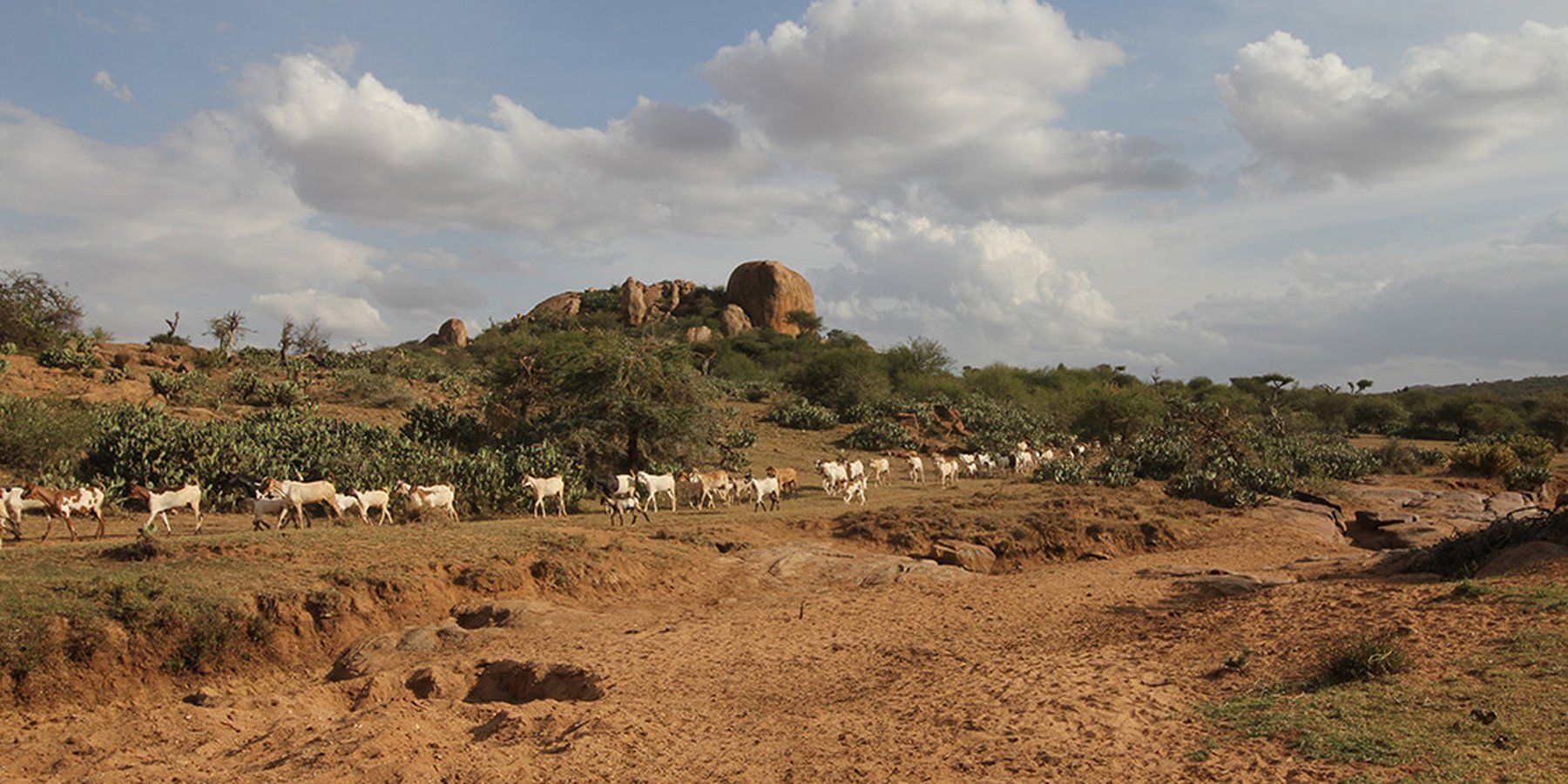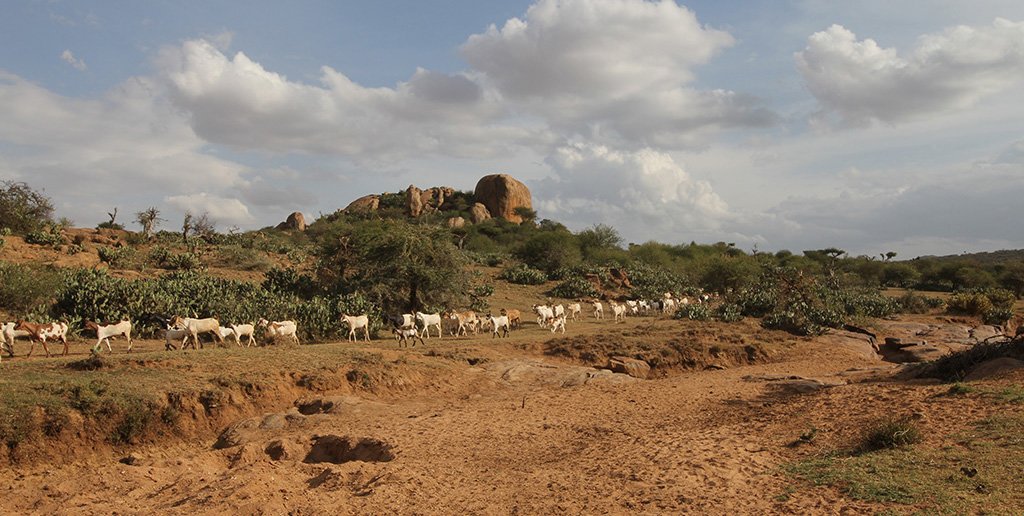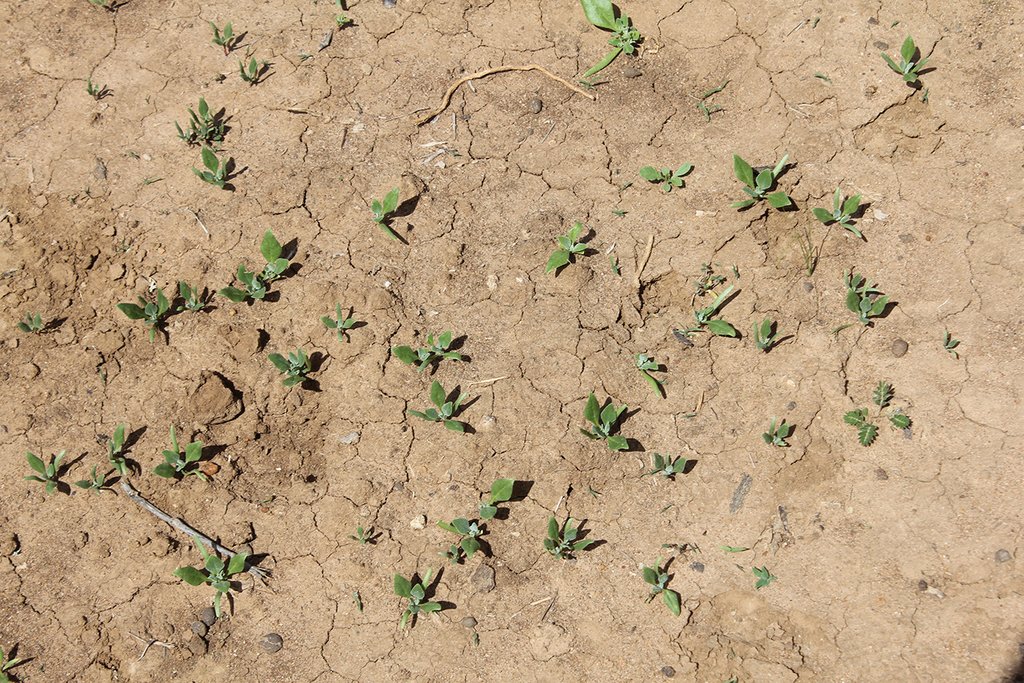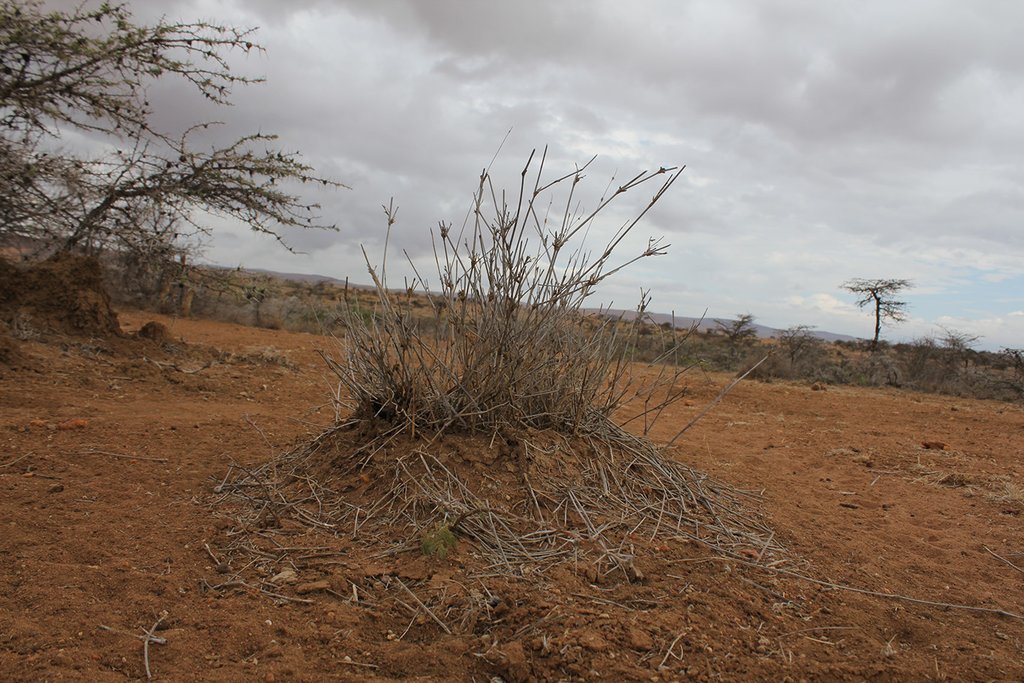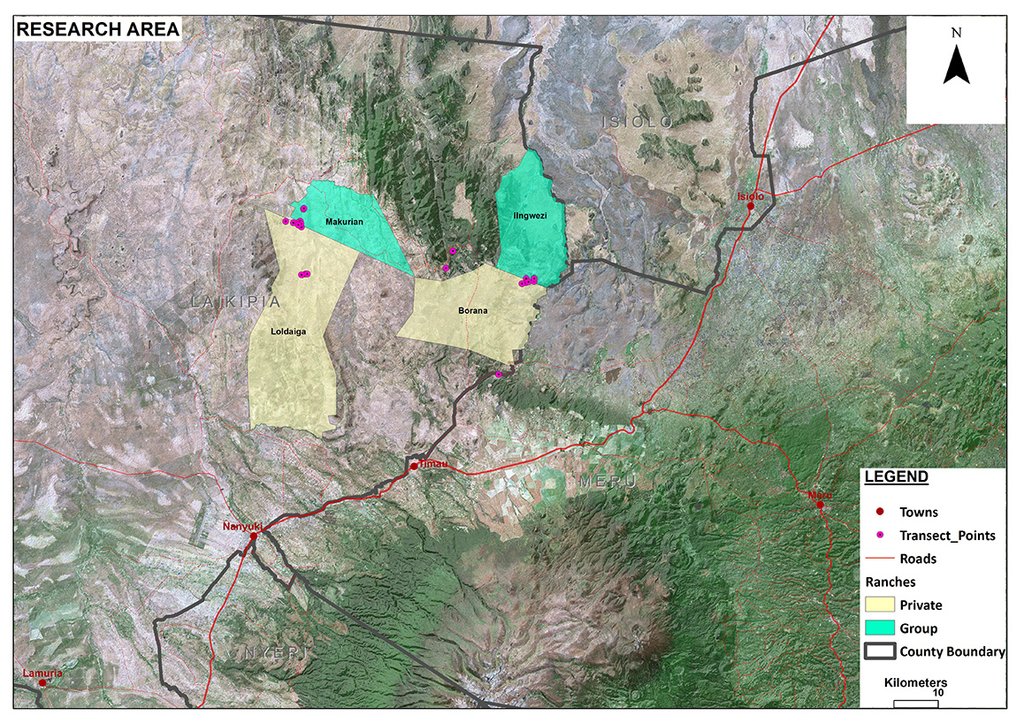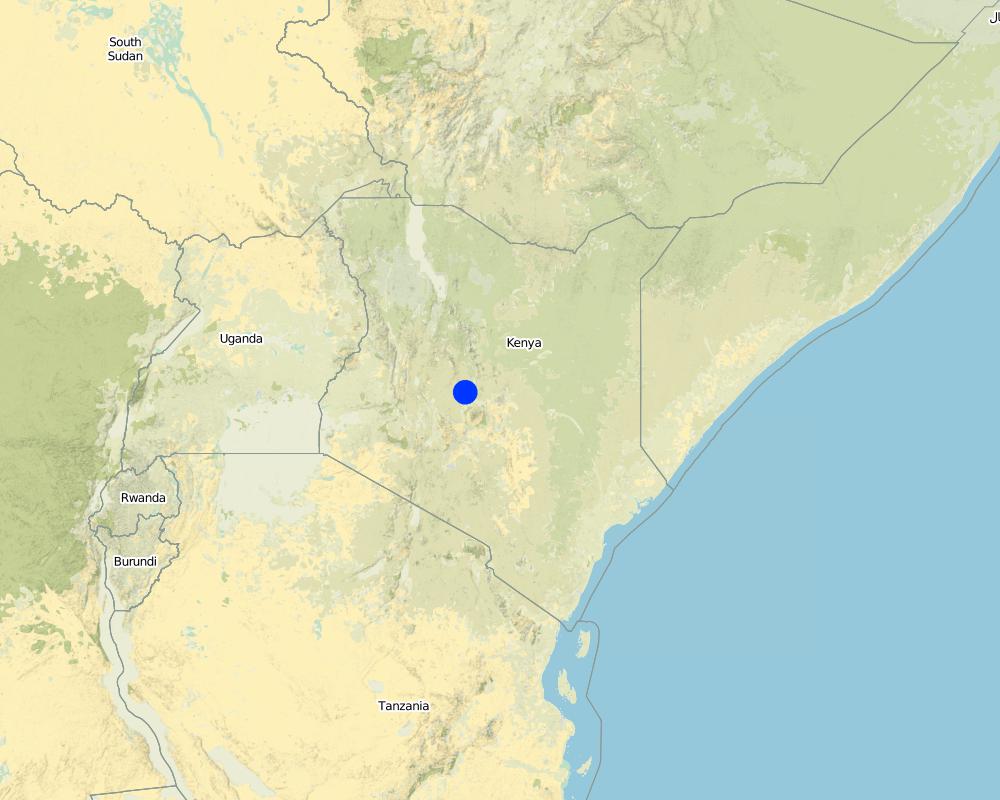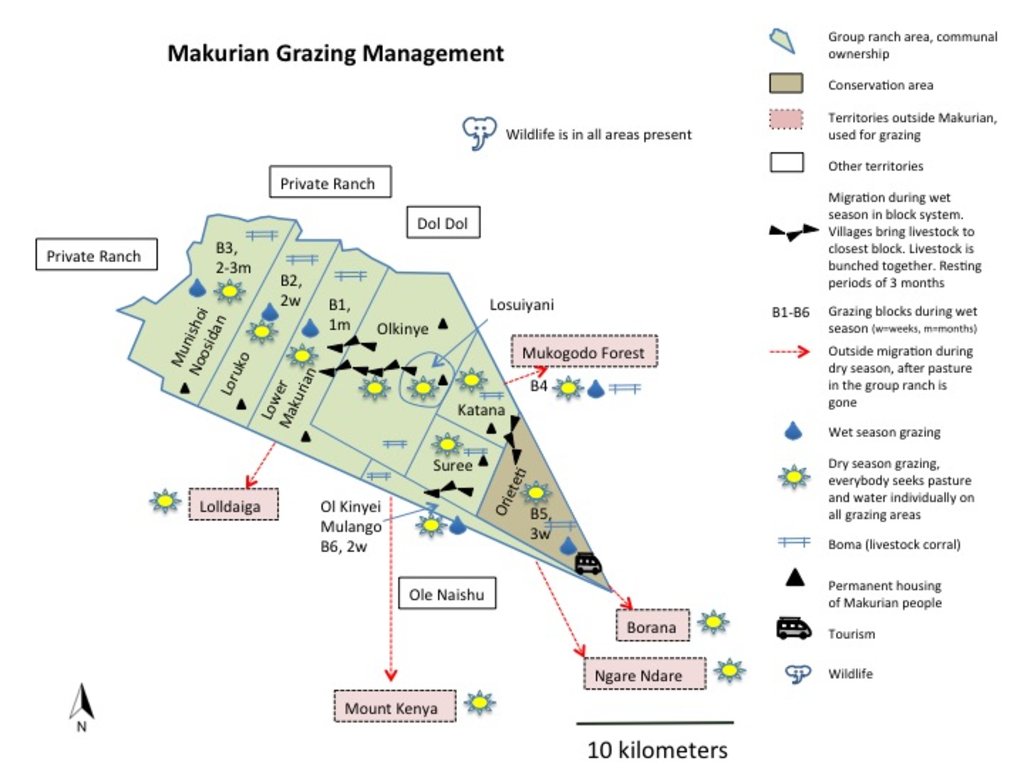Makurian Group Ranch Grazing with Holistic Management Principles [كينيا]
- تاريخ الإنشاء:
- تحديث:
- جامع المعلومات: Michael Herger
- المحرر: –
- المراجعون: Rima Mekdaschi Studer, Hanspeter Liniger, Donia Mühlematter
technologies_2990 - كينيا
- Makurian Group Ranch Grazing with Holistic Management Principles: 1 فبراير، 2018 (inactive)
- Makurian Group Ranch Grazing with Holistic Management Principles: 22 فبراير، 2018 (inactive)
- Makurian Group Ranch Grazing with Holistic Management Principles: 3 سبتمبر، 2018 (inactive)
- Makurian Group Ranch Grazing with Holistic Management Principles: 9 مايو، 2019 (public)
عرض الأقسام
توسيع الكل طي الكل1. معلومات عامة
1.2 تفاصيل الاتصال بالأشخاص الرئيسيين لمصدر المعلومات والمؤسسات المشاركة في تقييم وتوثيق التقنية
الشخص (الأشخاص) الرئيسي لمصدر المعلومات
مستخدم الأرض:
Sepeika Milton
+254 (0) 723870987
olenape@yahoo.com
Makurian Group Ranch
Mukogodo Division, Laikipia North District, Kenya
كينيا
1.3 الشروط المتعلقة باستخدام البيانات الموثقة من خلال WOCAT
متى تم تجميع البيانات (ميدانيا)؟:
22/01/2017
يوافق جامع المعلومات والشخص (لاشخاص) الرئيسي لمصدر المعلومات على الشروط المتعلقة باستخدام البيانات الموثقة من خلال WOCAT:
نعم
1.4 إعلان بشأن استدامة التقنية الموصوفة
هل التقنية الموصوفة هنا تمثل مشكلة فيما يتعلق بتدهور الأراضي، بحيث لا يمكن إعلانها تقنية مستدامة لإدارة الأراضي؟:
نعم
التعليقات:
Makurian rangeland is in bad condition. The land is largely degraded and dominated by the invasive species "Opuntia". Makurian Group Ranch has abandoned the in 2007 implemented "Holistic Management" principles. However, one has to take into account that Masai pastoralists have historically been squeezed from all sides into smaller areas. Compare Herger (2018).
2. وصف تقنيةالإدارة المستدامي للأراضي
2.1 وصف مختصر للتقنية
تعريف التقنية:
The grazing principles of a Masai group ranch (pastoralists) deal with high numbers of livestock in semi-arid lands with very limited water resources. Makurian has abandoned "Holistic Management" principles and applies a more traditional management system today. There is a grazing plan for the rains, while during the dry season everybody seeks for water and pasture individually. Bare land is recovered by "Boma” technology (strategic corralling of animals overnight) and reseeding. The rangeland is due to high stocking rates severely degraded with lots of erosion, bare ground, and invasive species. High stocking rates have on the one hand historical and political reasons and on the other hand socioeconomic rationales.
2.2 وصف تفصيلي للتقنية
الوصف:
On Makurian Masai Group Ranch, livestock production management is through a combination of traditional livestock keeping practices and newly introduced management principles. Livestock production at Makurian is for subsistence and local use, and has very high cultural significance.
During the wet season, livestock are “bunched” together and rotational grazing in blocks is practiced. The management team (elders) group all livestock from each village (16 villages) and each uses the block next to their village. Livestock are hardly separated (cows, heifers, steers, bulls all herded together).
o Block 1: Lower Makurian - 1 month
o Block 2: Makurian Loruko - 2 weeks (next to Lolldaiga Northern Gate)
o Block 3: Munishoi Noosidan - 2-3 months
o Block 4: Mukogodo Forest - 1-2 months
o Block 5: Orieteti Conservation Area - 3 weeks. Soft grass, runs out quickly.
o Block 6: Ol Kinyei Mulango - 2 weeks. Next to Olenaisho
They apply resting periods of three months after usage (if this rule is broken, the owner is punished by a fine of one livestock unit).
When it becomes dry, everyone is responsible for their own livestock. Owners of livestock want to maintain and decide about their livestock individually, this is why "Holistic Management" and specific grazing plans for the dry season did not work.
In comparison to earlier days when the whole family moved, and livestock was herded by morans (young warriors), they hire external herders nowadays (800 herders in total). Herders seek whatever water and pasture remains on the group ranch, then move on to:
(a) Ngare Ndare forest: 1,000 cattle and 1,000 sheep and goats (shoats) per year on average, for 1-2 months, over an area of 250 km2;
(b) Mukogodo forest: 3,000 cattle and 4,000 shoats per year on average, for 3-4 weeks, over 250 km2, and
(c) Mount Kenya: 12,000 cattle and 5,000 shoats on average per year, for 1-2 months, on an undefined area.
In Mukogodo forest, Makurian Masai have also officially settled, in Ngare Ndare forest on the other hand they graze on the basis of an informal agreement and on Mount Kenya it is not official pasture - but grazing is tolerated). They are also assisted by private ranches to graze during droughts (Lolldaiga and Borana; for every 1,000 units, they usually pay 5 Ksh per cow per month: a token amount). On one private ranch (Borana) they also graze steers and cows for fattening and selling.
Furthermore, Laikipia rangelands support some of the highest densities of wildlife in Kenya, however, group ranches less so than private ranches. The wild herbivore biomass density on group ranches is by Georgiadis et al. (2007) estimated at 205 ha /TLU.
Bomas (corrals in Kiswahili) for the livestock are constructed in traditional style, where animals are kept closely bunched together in enclosures overnight. Bomas are strategically located on denuded land to rehabilitate the land (through dung accumulation and breaking the soil crust by hoof action). Every homestead has one boma (approximately 1,500 in total in the whole Group Ranch). When herders are moving with livestock, temporary bomas are constructed.
Sales are usually need-driven (e.g. for school fees) within a family. They sell to the nearest local markets (in DolDol and Nanyuki) or directly to butchers. Makurian is also part of the "Dung Market" in Mukogodo District, where livestock dung is sold as manure for crop production. Moreover, Makurian makes additional income by harvesting sand and selling it for construction.
2.3 صور التقنية
2.5 البلد/المنطقة/المواقع التي تم تنفيذ التقنية فيها والتي يغطيها هذا التقييم
البلد:
كينيا
المنطقة/الولاية/المحافظة:
Laikipia
مزيد من التفاصيل حول الموقع:
Mukogodo Division
Map
×2.6 تاريخ التنفيذ
في حالة عدم معرفة السنة بالتحديد، يرجى الإشارة إلى التاريخ التقريبي:
- منذ أقل من 10 سنوات (مؤخرًا)
2.7 إدخال التقنية
حدد كيف تم إدخال التقنية:
- من خلال ابتكار مستخدمي الأراضي
التعليقات (نوع المشروع، الخ):
Holistic Management approach by Allan Savory was implemented in 2007, which was abandoned after a few years. This documentation focuses on the traditional system and new management principles they introduced since then. For Holistic Management see "Il Ngwesi" and "Borana" documentations.
3. تصنيف تقنية الإدارة المستدامي للأراضي
3.1 الغرض الرئيسي ( الأغراض الرئيسية) للتقنية
- تحسين الإنتاج
- الحد من تدهور الأراضي ومنعه وعكسه
- الحفاظ على النظام البيئي
- الحفاظ على/تحسين التنوع البيولوجي
3.2 نوع (أنواع) استخدام الأراضي الحالية حيث يتم تطبيق التقنية

أراضي الرعي
أراضي الرعي الواسع النطاق:
- رعي شبه مرتحل
الأنواع والمنتجات الحيوانية الرئيسية:
Livestock: Cattle, goats, sheep, donkeys, camels. Meat and milk production (also blood) and as a bank/ value asset. Subsistence and local production. Livestock: 13,500 TLU, Stocking Rate 0.6 ha/TLU calculating the total area used by livestock (78 km2). Pressure on land (including wildlife density of 205 ha/TLU): 0.6 ha/TLU Livestock numbers: 15,000 cattle, 30,000 shoats (ratio goats - sheep 2:1) Livestock fluctuations (per year): -500 cattle sales, -4,000 shoats sales, +100 cattle purchase, +350 shoats purchase, -3,500 shoats slaughtered. +6,000 cattle, + 15,000 shoats due to natural breeding. On average, 2200 steers on Borana rangeland for fattening purpose. During droughts, livestock move to neighbouring private ranches (1,000 cows each on Lolldaiga and Borana on average) Wildlife: Giraffe, antelope/gazelle (e.g. gerenuk, impala, Thomson's gazelle), baboons, zebras, dikdik, hares, elephants, and more.

المستوطنات والبنية التحتية
- المستوطنات والمباني
ملاحظات:
Villages, bomas, manyattas.
8'000 inhabitans.
3.3 مزيد من المعلومات حول استخدام الأراضي
إمدادات المياه للأرض التي يتم تنفيذ التقنية عليها:
- بعلية
عدد مواسم الزراعة في السنة:
- 2
حدد:
Short rains in November and December. Long rains in April and May. Rains from (October) November to December are usually better in this area. Rainfalls with strong local variations and changing regimes.
كثافة الثروة الحيوانية (إذا كانت ذات صلة):
13’500 TLU, Stocking Rate 0.6 ha/TLU
3.4 مجموعةالإدارة المستدامة للأراضي التي تنتمي إليها هذه التقنية
- الرعي وإدارة المراعي
- تحسين الغطاء الأرضي/النباتي
3.5 انتشار التقنية
حدد انتشار التقنية:
- منتشرة بالتساوي على مساحة
إذا كانت التقنية منتشرة بالتساوي على منطقة ما، فحدد المنطقة التقريبية المغطاة:
- 100-10 كم2
التعليقات:
The area size of the group ranch is 68 km2, however, the total area affected by livestock is 78 km2.
3.6 التدابير التقنية في مجال إلادارة المستدامة للأراضي

التدابير الإدارية
- M2: تغيير في مستوى الإدارة/الكثافة
- M4: تغيير كبير في توقيت الأنشطة
3.7 الأنواع الرئيسية من تدهور الأراضي التي تناولتها التقنية

تآكل التربة بالمياه
- الوزن(Wt): فقدان التربة السطحية/تآكل السطح
- (Wg):الانجراف الخلجاني/ الخلجان

تآكل التربة الناتج عن الرياح
- (Et): فقدان التربة السطحية

التدهور المادي أو الفيزيائي للتربة
- (Pc) : تراص التربة
- (Pk)ظهور وتكون قشرة سطحية
- انسداد مسام التربة

التدهور البيولوجي
- (Bc): تناقص الغطاء النباتي
- (Bh): فقدان الموائل
- (Bq): انخفاض الكمية/الكتلة الحيوية
- (Bs): انخفاض جودة وتركيبة الأنواع/التنوع
- (Bl): فقدان الحياة بالتربة
التعليقات:
Across the grasslands and rangelands, an increase in bare land and bush has been a clear trend all over Laikipia for many years, both on community-owned lands and private ranches. Major identified ecological problems caused (partly) by livestock production in the research area are: major identified ecological problems (partly) caused by livestock production are: bare ground, low contents of soil organic carbon and plant-available nutrients, soil erosion (sealing, crusting, rills and gullies, water flow patterns, sheet erosion, pedestals), poor soil properties, undesirable species, and (increasing) woody and invasive species (Makurian is heavily affected by the invasion of Opuntia strica species). The current major problem on rangelands is the invasive species Opuntia stricta, which, however, only could spread that widely because of degraded land in the first place. The technology aims at improving vegetation cover of the land and thereby reducing further degradation and restoring degraded land.
3.8 منع أو حد أو عكس تدهور الأراضي
تحديد هدف التقنية فيما يتعلق بتدهور الأراضي:
- الحد من تدهور الأراضي
- اصلاح/إعادة تأهيل الأراضي المتدهورة بشدة
4. المواصفات الفنية، وأنشطة التنفيذ، والمدخلات، والتكاليف
4.1 الرسم الفني للتقنية
4.3 معلومات عامة بخصوص حساب المدخلات والتكاليف
حدد كيفية احتساب التكاليف والمدخلات:
- حسب مساحة تنفيذ التقنية
الإشارة إلى حجم ووحدة المساحة:
Herders, animals treatment (for the total area affected by livestock = 78km2)
حدد العملة المستخدمة لحساب التكاليف:
- دولار أمريكي
اذكر متوسط تكلفة أجر العمالة المستأجرة في اليوم الواحد:
1.5
4.4 أنشطة التأسيس
| النشاط | نوع التدبير | التوقيت | |
|---|---|---|---|
| 1. | Grazing planning for bunched animals (livestock from all households) | إدارية | |
| 2. | Hiring herders, supervisors, watchmen etc | إدارية |
4.5 التكاليف والمدخلات اللازمة للتأسيس
| تحديد المدخلات | الوحدة | الكمية | التكاليف لكل وحدة | إجمالي التكاليف لكل مدخل | % من التكاليف التي يتحملها مستخدمو الأراضي | |
|---|---|---|---|---|---|---|
| العمالة | unknown |
4.6 الصيانة/الأنشطة المتكررة
| النشاط | نوع التدبير | التوقيت/الوتيرة | |
|---|---|---|---|
| 1. | Herders, supervisors, watchmen etc | ||
| 2. | Animal treatments (vaccination, spraying, injections) | ||
| 3. | Planning activites | ||
| 4. | Boma Management (mainly movement of Bomas) |
4.7 التكاليف والمدخلات اللازمة للصيانة/للأنشطة المتكررة (سنويًا)
| تحديد المدخلات | الوحدة | الكمية | التكاليف لكل وحدة | إجمالي التكاليف لكل مدخل | % من التكاليف التي يتحملها مستخدمو الأراضي | |
|---|---|---|---|---|---|---|
| العمالة | Herders, watchmen, supervisors | Person-days | 260000,0 | 1,5 | 390000,0 | |
| العمالة | Engaged population in livestock production | 720000,0 | 1,5 | 1080000,0 | ||
| غير ذلك | Animals treatments | Per TLU | 13500,0 | 3,5 | 47250,0 | |
| إجمالي تكاليف صيانة التقنية | 1517250,0 | |||||
التعليقات:
Every family hires their own herder during the dry season. The family is staying put. Inhabitants are also considered as labor since they are usually all engaged in livestock production. However, milk and blood production are not considered.
Animal treatments consist of vaccination, spraying (ticks), injections.
4.8 أهم العوامل المؤثرة على التكاليف
قدم وصفا لأهم العوامل التي تؤثر على التكاليف:
Herders
5. البيئة الطبيعية والبشرية
5.1 المناخ
هطول الأمطار السنوي
- < 250 مم
- 251- 500 ملم
- 501 - 750ملم
- 1,000-751 ملم
- 1,500-1,100 ملم
- 2,000-1,500 ملم
- 3,000-2,001 ملم
- 4,000-3,100 ملم
- > 4000 ملم
حدد متوسط هطول الأمطار السنوي (إذا كان معروفًا)، بالملليمتر:
378,00
المواصفات/التعليقات على هطول الأمطار:
Strong local (and temporal) variation, changing rainfall regimes. Makurian generally drier than Lolldaiga.
الإشارة إلى اسم محطة الأرصاد الجوية المرجعية المعنية:
Rainfall gauge Lolldaiga Northern Gate (neighbouring ranch)
المنطقة المناخية الزراعية
- شبه قاحلة
5.2 طوبوغرافيا
متوسط الانحدارات:
- مسطح (0-2%)
- بسيط (3-5%)
- معتدل (6-10%)
- متدحرج (11-15%)
- تلال (16-30%)
- شديدة الانحدار(31-60%)
- فائقة الانحدار (>60%)
التضاريس:
- هضاب/سهول
- أثلام مرتفعة
- المنحدرات الجبلية
- منحدرات التلال
- منحدرات في السفوح
- قاع الوادي
المنطقة الارتفاعية:
- 100-0 متر فوق سطح البحر
- 500-101 متر فوق سطح البحر
- 1,000-501 متر فوق سطح البحر
- 1,500-1,001 متر فوق سطح البحر
- 2,000-1,501 متر فوق سطح البحر
- 2,500-2,100 متر فوق سطح البحر
- 3,000-2,501 متر فوق سطح البحر
- 4,000-3,001 متر فوق سطح البحر
- > 4000 متر فوق سطح البحر
5.3 التربة
متوسط عمق التربة:
- ضحل جدًا (0-20 سم)
- ضحلة (21-50 سم)
- متوسطة العمق (51-80 سم)
- عميقة (81-120 سم)
- عميقة جدًا (> 120 سم)
قوام التربة (التربة السطحية):
- خشن / خفيف (رملي)
- متوسط ( طميي، سلتي)
قوام التربة (> 20 سم تحت السطح):
- خشن / خفيف (رملي)
- متوسط ( طميي، سلتي)
المواد العضوية في التربة السطحية:
- منخفضة (<1%)
إذا كان متاحًا، قم بإرفاق وصف كامل للتربة أو تحديد المعلومات المتوفرة، على سبيل المثال نوع التربة، الرقم الهيدروجيني/ درجة حموضة التربة، قدرة التبادل الكاتيوني، النيتروجين، الملوحة وما إلى ذلك.
Red and brown sandy soils. Black cotton soil. Luvisol, Regosol, Vertisol
SOC 0.8 %
pH: 6.4
Clay: 9 %
Silt: 41 %
Sand: 50 %
Fore more data on rangeland health see Herger (2018)
5.4 توافر المياه ونوعيتها
منسوب المياه الجوفية:
> 50 م
توافر المياه السطحية:
متوسط
نوعية المياه (غير المعالجة):
مياه الشرب سيئة (تتطلب معالجة)
هل تعتبر ملوحة الماء مشكلة؟:
كلا
هل تحدث فيضانات في المنطقة؟:
كلا
5.5 التنوع البيولوجي
تنوع الأنواع:
- متوسط
تنوع الموائل:
- منخفض
التعليقات والمواصفات الإضافية بشأن التنوع البيولوجي:
Grassed acacia bushland. Bare land up to 70% during dry season. Loss of (native) vegetation. Invasive species coming in. Dominant grasses: Eragrostis species, Cynadon species, Hyparrhenia species, Kelenger species. Dominant shrubs: Opuntia, Lyceum europaeum, Barleria acuthodies. Dominant trees: Acacia drepanolobium, Acacia etbaica. Detailed list of all species (also wildlife) available (see Herger 2018).
5.6 خصائص مستخدمي الأراضي الذين يطبقون التقنية
مستقر أو مرتحل:
- شبه مرتحل
التوجه السوقي لنظام الإنتاج:
- مختلط (كفاف/ تجاري)
الدخل من خارج المزرعة:
- أقل من % 10من كامل الدخل
المستوى النسبي للثروة:
- ضعيف
أفراداً أو مجموعات:
- فرد/أسرة معيشية
- المجموعات/ المجتمع المحلي
مستوى المكننة:
- عمل يدوي
الجنس:
- نساء
- رجال
عمر مستخدمي الأرضي:
- شباب
- متوسط العمر
اذكر الخصائص الأخرى ذات الصلة لمستخدمي الأراضي:
Masai people. 8'000 Masai living in Makurian. Traditional livestyle. Livestock with very high cultural value.
Have been historically "squeezed" from all sides into smaller areas for livestock keeping. Future of pastoralism is in question.
5.7 متوسط مساحة الأرض المملوكة أو المستأجرة من قبل مستخدمي الأراضي الذين يطبقون التقنية
- < 0.5 هكتارا
- 0.5 - 1 هكتار
- 1 -2 هكتار
- 2 - 5 هكتار
- 5 - 15 هكتار
- 15 - 50 هكتار
- 50 - 100هكتار
- 500-100 هكتار
- 1,000-500 هكتار
- 10,000-1,000 هكتار
- > 10,000 هكتار
هل يعتبر هذا نطاقًا صغيرًا أو متوسطًا أو واسعا (في إشارة إلى السياق المحلي)؟:
- على نطاق صغير
التعليقات:
This applies for households that are staying put. Herders trek livestock on a total area of over 10'000 ha.
5.8 ملكية الأراضي، وحقوق استخدام الأراضي، وحقوق استخدام المياه
ملكية الارض:
- مجتمعي/قروي
حقوق استخدام الأراضي:
- مجتمعي (منظم)
حقوق استخدام المياه:
- وصول مفتوح (غير منظم)
5.9 الوصول إلى الخدمات والبنية التحتية
الصحة:
- ضعيف
- معتدل
- جيد
التعليم:
- ضعيف
- معتدل
- جيد
المساعدة التقنية:
- ضعيف
- معتدل
- جيد
العمل (على سبيل المثال خارج المزرعة):
- ضعيف
- معتدل
- جيد
الأسواق:
- ضعيف
- معتدل
- جيد
الطاقة:
- ضعيف
- معتدل
- جيد
الطرق والنقل:
- ضعيف
- معتدل
- جيد
مياه الشرب وخدمات الصرف الصحي:
- ضعيف
- معتدل
- جيد
الخدمات المالية:
- ضعيف
- معتدل
- جيد
6. الآثار والتصريحات الختامية
6.1 الآثار التي أظهرتها التقنية في الموقع
الآثار الاجتماعية والاقتصادية
الإنتاج
إنتاج الأعلاف
التعليقات/ حدد:
Lack of rain. Impact analysis is comparing the current state vs. some 10 years ago when they applied Holistic Management. This is why improvements are indicated according to the land user, even though the land is severely degraded.
جودة العلف
إنتاج حيواني
إدارة الأراضي
توافر المياه ونوعيتها
توافر مياه الشرب
نوعية مياه الشرب
التعليقات/ حدد:
less salt
توافر المياه للماشية
نوعية المياه للماشية
الدخل والتكاليف
عبء العمل
التعليقات/ حدد:
Compared to HM it has decreased, because of higher numbers of livestock it has increased though
الآثار الاجتماعية والثقافية
الأمن الغذائي / الاكتفاء الذاتي
استخدام الأراضي / حقوق المياه
المعرفة بالإدارة المستدامة للأراضي/تدهور الأراضي
التعليقات/ حدد:
More traditional knowledge than with Holistic Management
التخفيف من حدة الصراع
التعليقات/ حدد:
Other communities
الآثار الايكولوجية
دورة المياه / الجريان السطحي
كمية المياه
جودة المياه
الجريان السطحي
التعليقات/ حدد:
Opuntia
مستوى المياه الجوفية/ الطبقة المائية الجوفية
التبخر
التنوع البيولوجي: الغطاء النباتي، الحيوانات
الغطاء النباتي
التعليقات/ حدد:
Opuntia (an invasive cactus) is chasing out native plants and consuming water. Elephants are destroying trees (high density of elephants, Opuntia is additionally attracting elephants)
التنوع النباتي
التعليقات/ حدد:
Opuntia
التنوع الحيواني
التعليقات/ حدد:
More wildlife coming in, roaming even in villages. Elephants problematic; breaking fences
تنوع الموائل
التعليقات/ حدد:
Wildlife numbers are declining drastically. Indigenous vegetation is being driven out by invasive species like Opuntia.
الحد من مخاطر المناخ والكوارث
آثار الجفاف
التعليقات/ حدد:
Resilience has worsened
6.2 الآثار التي أظهرتها التقنية خارج الموقع
تعليقات بشأن تقييم الأثر:
All listed impacts are as perceived by land users according to Milton Sepeika, Chief of Makurian. In his opinion, abandoning Holistic Management principles had many advantages. According to him, animal production has increased. Though he recognices the bad condition of the land and poor conditon of livestock. He mainly blames the drought and the Opuntia invasion for these problems. Results from a rangeland health assessment (only ecological conditions) show heavily degraded ecological conditions (dry season up to 70% bare soil, poor soil and vegetation, erosions features, inability of producing annual and perennial grasses after rains etc) (compare Herger 2018). A
6.3 تعرض التقنية وحساسيتها لتغير المناخ التدريجي والظواهر المتطرفة/الكوارث المرتبطة بالمناخ (كما يراها مستخدمو الأراضي)
تغير مناخ تدريجي
تغير مناخ تدريجي
| الموسم | نوع التغير المناخي/ المتطرف | كيف تتعامل التقنية مع ذلك؟ | |
|---|---|---|---|
| تغير مناخ تدريجي آخر | Greater variation of seasonal rainfall, more intense rainfalls, change in rainfall regimes in general (see Schmocker 2013 and Imfeld 2016). | زيادة | ليس جيدا |
الظواهر المتطرفة / الكوارث المرتبطة بالمناخ
الكوارث المناخية
| كيف تتعامل التقنية مع ذلك؟ | |
|---|---|
| موجة حر | ليس جيدا |
6.4 تحليل التكلفة والعائد
كيف يمكن مقارنة العوائد نسبة لتكاليف الإنشاء (من وجهة نظر مستخدمي الأراضي)؟
عوائد قصيرة الأجل:
سلبي
عوائد طويلة الأجل:
سلبي قليلا
كيف تتم مقارنة العوائدمع كلفة الصيانة/التكاليف المتكررة (من وجهة نظر مستخدمي الأراضي)؟
عوائد قصيرة الأجل:
سلبي
عوائد طويلة الأجل:
سلبي قليلا
6.5 اعتماد التقنية
- 1-10%
من بين جميع الذين تبنوا التقنية، كم عدد الذين فعلوا ذلك بشكل تلقائي، أي دون تلقي أي حوافز مادية/مدفوعات؟:
- 10-0%
6.6 التكيف
هل تم تعديل التقنية مؤخرًا لتتكيف مع الظروف المتغيرة؟:
نعم
إذا كانت الإجابة بنعم، وضح الظروف المتغيرة التي تم تكييفها معها:
- تغير المناخ / التطرف
حدد تكيف التقنية(التصميم، المواد/الأنواع، الخ.):
Masai people have changed their livestock composition towards owning more smallstock (goats and sheep) than cattle. Goats are tolerant to drought, and as browsers they don't need grass. They can be turned into money much quicker than a cow in times of need. Their faster reproductive cycle means they can rebuild numbers faster than cattle after losses through drought.
6.7 نقاط القوة / المزايا / الفرص التي توفرها التقنية
| نقاط القوة/ المزايا/ الفرص من وجهة نظر مستخدمي الأراضي |
|---|
| Everybody makes their own decision about their livestock (during the dry season). Owners stay in charge. |
| Grazing principles and plans lead to community control. |
| Traditional knowledge |
| Fewer costs |
| Less of effort (during the dry season no bunching of animals) |
| Fewer trees cut. During Holistic Management times many trees had to be cut to create two big bomas every month. |
| Can enrich land, livestock is tilling ground (seeds don't go away - kept in ground due to "tilling") |
6.8 نقاط ضعف / مساوىء / مخاطر التقنية وسبل التغلب عليها
| نقاط الضعف/ المساوىء/ المخاطر من وجهة نظر مستخدم الأراضي | كيف يمكن التغلب عليها؟ |
|---|---|
| Brings in conflicts. If you start to protect and maintain your grass, thieves come in. | |
| Spread of diseases when animals from different places with different diseases are brought together during the wet season |
7. المراجع والروابط
7.1 طرق جمع/مصادر المعلومات
- زيارات ميدانية، مسوحات ميدانية
4 field visits with included "rangeland health assessment" in different parts of Makurian (mostly next to Lolldaiga Northern Gate) where I could see the condition of the land as well as several other visits of the area.
- مقابلات مع مستخدمي الأراضي
Several meetings with chief, rangeland specialist and botanist of Makurian.
- مقابلات مع المتخصصين/الخبراء في الإدارة المستدامة للأراضي
Truman Young
Dan Rubenstein
Dino Martins
John Letai
Samali Letai
Peter Hetz
Dominic Maringa
Joseph Putunoi
Patrick Ekodere
- التجميع من التقارير والوثائق الأخرى الموجودة
Scientific papers, LWF reports etc.
7.2 المراجع للمنشورات المتاحة
العنوان، المؤلف، السنة، النظام القياسي الدولي لترقيم الكتب ISBN:
Imfeld, N. (2016). Modeling Seasonal and Annual Precipitation using long-term Climate Records and Topography. MSc Thesis. University of Bern.
متاح من أين؟كم التكلفة؟:
Online
العنوان، المؤلف، السنة، النظام القياسي الدولي لترقيم الكتب ISBN:
Herger, M.B. (2018). Environmental Impacts of Red Meat Production. MSc Thesis. University of Bern.
متاح من أين؟كم التكلفة؟:
University of Bern
العنوان، المؤلف، السنة، النظام القياسي الدولي لترقيم الكتب ISBN:
Georgiadis, N.J., Olivero, I.N., Romanach, S.S. (2007). Savanna herbivore dynamics in a livestock-dominated landscape: I. Dependence on land use, rainfall, density, and time. Biology Conservation 137(3): 461-472.
متاح من أين؟كم التكلفة؟:
Online
الروابط والوحدات المواضيعية
توسيع الكل طي الكلالروابط
لا يوجد روابط
الوحدات المواضيعية
لا يوجد وحدات مواضيعية


